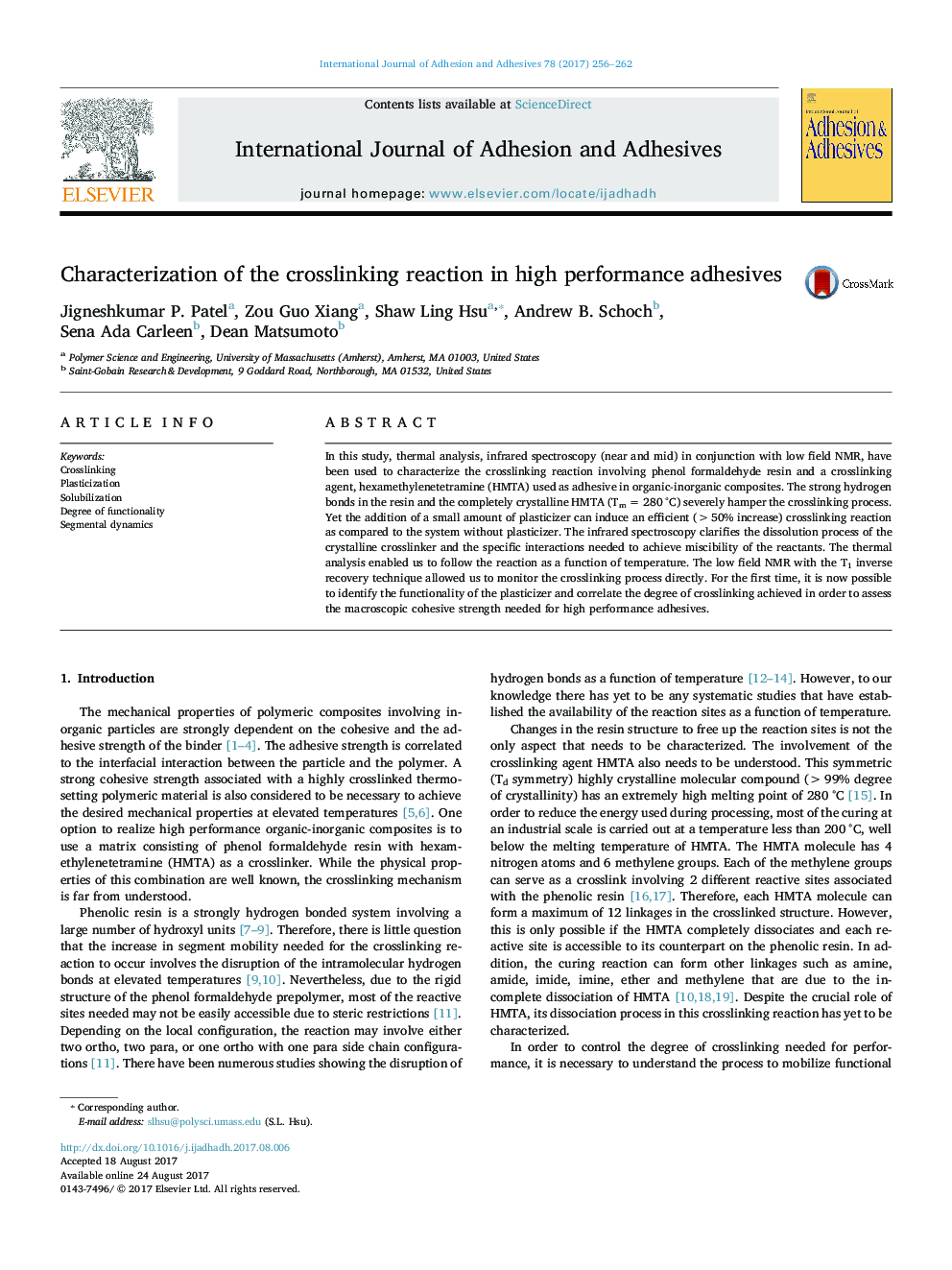| Article ID | Journal | Published Year | Pages | File Type |
|---|---|---|---|---|
| 5014790 | International Journal of Adhesion and Adhesives | 2017 | 7 Pages |
Abstract
In this study, thermal analysis, infrared spectroscopy (near and mid) in conjunction with low field NMR, have been used to characterize the crosslinking reaction involving phenol formaldehyde resin and a crosslinking agent, hexamethylenetetramine (HMTA) used as adhesive in organic-inorganic composites. The strong hydrogen bonds in the resin and the completely crystalline HMTA (Tm = 280 °C) severely hamper the crosslinking process. Yet the addition of a small amount of plasticizer can induce an efficient (> 50% increase) crosslinking reaction as compared to the system without plasticizer. The infrared spectroscopy clarifies the dissolution process of the crystalline crosslinker and the specific interactions needed to achieve miscibility of the reactants. The thermal analysis enabled us to follow the reaction as a function of temperature. The low field NMR with the T1 inverse recovery technique allowed us to monitor the crosslinking process directly. For the first time, it is now possible to identify the functionality of the plasticizer and correlate the degree of crosslinking achieved in order to assess the macroscopic cohesive strength needed for high performance adhesives.
Related Topics
Physical Sciences and Engineering
Engineering
Mechanical Engineering
Authors
Jigneshkumar P. Patel, Zou Guo Xiang, Shaw Ling Hsu, Andrew B. Schoch, Sena Ada Carleen, Dean Matsumoto,
